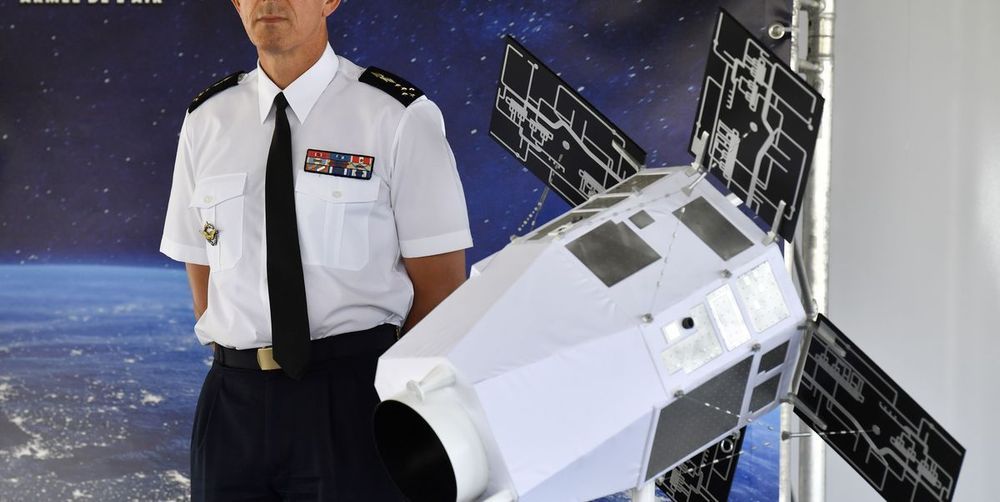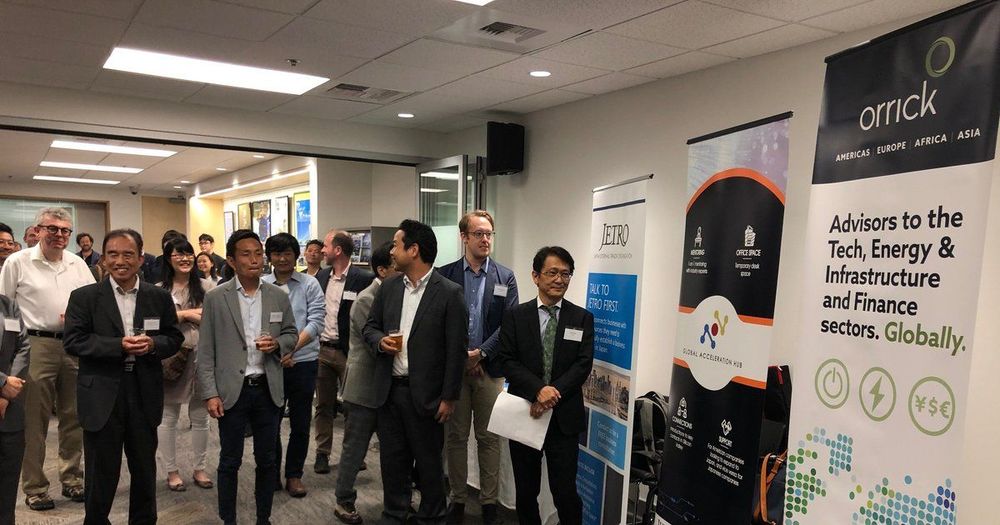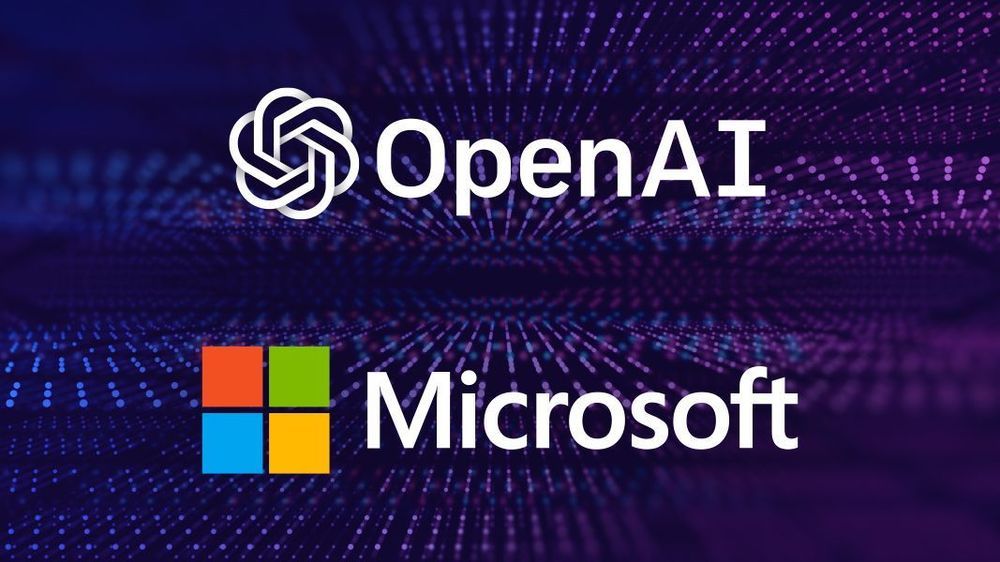The bottom line: The world as we know it — of complex global supply chains and countries playing to their best Ricardian advantage — is rapidly transforming into an atavistic place of trade barriers and bellicose rhetoric. If countries increasingly retreat into their nationalistic shells, no amount of fiscal or monetary stimulus will be able to head off the inevitable economic and financial consequences.
Category: economics
In the 1990s farmed fish (aquaculture) accounted for about one-quarter of global seafood production according to the UN Food and Agricultural Organization. Now, with demand rising and the ocean’s resources being steadily depleted, aquaculture has overtaken wild fishery, globally producing more than 100 million metric tonnes of seafood each year.
Artificial intelligence is increasingly used in aquaculture management to analyze water conditions, environmental changes and fish status. And nowhere are these emerging fishing industry technologies more important than in Japan.
According to a report by private research group Yano Economic Research Institute, Japan’s aquaculture market will reach JP¥20.3 billion in 2021, an increase of 53 percent from 2016. AI-powered smart fisheries will account for JP¥1.3 billion, a figure that is rising quickly.
Today, I was co-host of an online cryptocurrency symposium—taking questions from hundreds of visitors. A common question goes something like this:
Can Bitcoin be used in person—or
is it just for internet commerce?
Our panel had a moderator, and also an off-screen video director. As I cleared my throat in preparation to offer a response, a voice in my ear reminded me that it was not my turn. The director explained that another panelist would reply. It was a highly regarded analyst and educator in Australia. Realizing that that she was calling the shots, I deferred.
I was shocked as I listened to a far off colleague suggest that Bitcoin is not useful for in-person payments. I wonder how he explains this to the grocers, tailors, lawyers, theme parks and thousands of retailers who save millions of dollars each year by accepting bitcoin—all without risk of volatility and even if they demand to instantly convert sales revenue into Fiat currency.*
“Of course it can be used in person, Numb-nut!” (I kept the thought to myself. I know better than to criticize another speaker).
An in-person transaction, such as paying for a meal after consumption, is an ideal use scenario. It benefits everyone: The seller captures greater value and the buyer is unlikely to need bank-brokered arbitration. He only needs a receipt. He will never demand a 90-day return warranty, claim that he was shipped an empty box, nor complain about the amount charged.†
But, this isn’t about my clueless colleague. It is about the ease of using Bitcoin in person and the interesting stuff that happens in the background. Let’s look at a simple purchase scenario — and then we’ll dig in to marvel at the settlement process. This is a true story, told in 7 bullets. It occurred in the summer of 2015—just 5 years after the very first use of bitcoin to purchase anything (Bitcoin Pizza Day was May 22, 2010).

- It’s 2 AM on a moonlit Sunday morning. Driving from Boston to New York I rehearse the Bitcoin presentation that I will deliver at a startup clinic hosted by LaGuardia Community College and the Cryptocurrency Standards Association. I pull off the last exit in Connecticut and find the Darien Diner. My meal costs $12.
- As I take one last bite of midnight quiche, I realize that I forgot my wallet! No cash; no driver’s license. I have a smartphone, but it is brand new. I have not yet loaded it with credit cards. But, I do have access to my account passwords.
- I scope my surroundings. My waiter is the only one on the main floor. He is also the cashier. Seeing no other customers or staff, I figure that the owner or cook is in the kitchen; probably the only other person on premises. I approach the cash register, hoping that the waiter will accept my apology—and trust that I will pay on my return trip in a few days. Before I launch into my poor-man’s excuse, I spot the placard shown at right. Bitcoin is among the diner’s accepted payment methods!

- I ask the cashier how I can pay with Bitcoin. His response catches me off-guard: “I have no idea…They told me that you would know.” What?! Does this guy recognize me? Does he know that I am on my way to give a Bitcoin lecture? This seems very unlikely. Gradually, I understand what he means, and I know what to do…
- I point my smartphone at the QR code (It’s taped to the cash register next to the words: “We accept Bitcoin”). In fact, this restaurant is fully on board. I am amazed to see that a display on the register offers a custom code that is encoded with the exact meal cost. That’s really cool! So, I shift my camera to that code.
- Immediately, my wallet asks if I would like to add a tip. (It’s hosted by an online exchange, but an application wallet will also work). I add $3 and press SEND.
- A thermal printer next to the till spits out a narrow receipt. At the very bottom, where it would typically say “Paid with MasterCard ending in −3862”, it says “Paid with Bitcoin”. The buzzing sound of that receipt printer tells the cashier that I am good to go. Good food in the tummy and a bill has been paid. Case closed; Return to car; Drive to New York.
What Really Happened?
In the few seconds between the authorization and the printed receipt, some fascinating things occurred around the world. Seriously Fascinating! This is almost magic — and it is transforming the way payments work, and—eventually—the way we view, understand and manage cash. ‡
- When I clicked SEND, a limited subset of Bitcoin credentials was presented to a massively distributed, worldwide network of miners. In effect, I informed the bookkeepers that I wish to have $15 transferred to the restaurant’s public address.
- Seconds later, the original credentials were voided (this solves the ‘double spend problem’) and a new transaction was added to public ledger that we call the blockchain. It now reflects my slightly reduced wealth.
But wait! It gets even more fascinating…
The “miners” that settled the transaction and provided new Bitcoin credentials needn’t have any awareness that they just facilitated payment for a meal at a diner in Darien Connecticut. From their perspective, these individuals and large server farms in Iceland, China, Israel, and South Africa — and in college dorms spread across the world — are engaged in a massively distributed gaming competition. They are competing for rewards based on solving a math problem.
As you review that last paragraph, imagine the elegance of the global network. Imagine the power, robust nature, and benefit that comes from it’s redundant and decentralized architecture. Imagine the ongoing incentive for bookkeepers to play a critical role in balancing a world-wide ledger. Imagine that authorities cannot shut down the network or even slow it down. Imagine the trust that individuals, businesses, NGOs, banks and governments can put in the monetary supply and the mechanisms of accounting. Imagine a world where this trust benefits everyone uniformly, fairly, and without susceptibility to graft or inflation.
Bitcoin and the blockchain, introduced together, are not minor, incremental contributions to economics, bookkeeping, trust, and commerce. They are overwhelmingly significant contributions to the future of human society and its institutions.
† You may have heard that bitcoin transactions are immutable. This is a simplification. The public ledger is immutable, but transactions are reversible, if terms are clear to both parties. Just as with Ethereum, smart contracts are built into the technology. So are hooks to centralized mediation, if that’s what the agreement calls for. Charge-backs, refunds, warranty demands and other arbitration are all possible. These features are built into Bitcoin, but rarely used in this early era.
Most Bitcoin transactions today are payments; they are not charges. Although they do not typically accommodate bank-brokered returns, rescission and charge-backs, these are all possible, and often without requiring an authority to broker the dispute.But these traditional safeties or mitigation must be agreed upon in advance. No longer does the seller have all the power, or the buyer need to run to a credit card processor to complain. Sales are either immutable or brokered by a 2-party contract.
This is not your grand-daddy’s payment mechanism. It is so much more evolved!
‡ In 2017, Bitcoin went through a period of intense growing pain. Transactions became so slow and costly, that in person transactions became impossible, especially for any amount less than $500. If you needed a transaction to complete in less than an hour, you would need to enlist in a bidding contest. A quick confirmation could cost upwards of $30 US.
The restaurant payment related above was an on-chain transaction. Today, transactions that use the Lightning Network overlay may occur within a private channel apart from the blockchain. But ultimately, every change in bitcoin ownership results in an individual or aggregated entry onto the blockchain.
Crisis in late 2017 and 2018
Sadly, in researching this article, I learned that the Darien Diner no longer accepts Bitcoin. Problems associated with transaction cost and delays in 2017~2018 discouraged acceptance by a great many retailers. No one eating a $12 meal would ever pay $30 in fees, and a cashier is not going to wait 2 hours to validate payment from a customer who has already eaten a meal and wants to hit the road.
That glitch sparked a terrible reversal of retail adoption. Even now (Q3 of 2019), retail penetration is sharply off its peak. We are barely beginning to recover the early adoption rate. Vendors lost faith, and many don’t yet realize that their POS investment can now be safely be reactivated. Lightning Network to the rescue!
he Next Crisis
Another crisis is looming, but it too will be solved.

Although the Bitcoin network is fast and inexpensive, the proof-of-work method used by miners to arrive at a distributed consensus consumes far too much power to scale. Mass adoption would consume more power than the world currently generates.
And here’s the kicker: The mining incentive ensures that any new, inexpensive energy that might be discovered in the future would be gobbled up by miners with no additional benefits to society (or even to the Bitcoin network). All the new, free (or cheap) power would be diverted away from homes, businesses, manufacturing and public works. The incentive for grabbing every cheap watt is very much like a cancerous growth.
Clearly, this is not sustainable. Bitcoin mining already uses more power than all of Argentina. But great minds are working on the problem and alternative methods of guaranteeing a fair, crowd-sourced accounting consensus are being tested, analyzed and debated. We will get through this complex problem, and hopefully—this time—without demoralizing a key factor in the tetrad: Consumers, developers, vendors & miners.
Philip Raymond co-chairs CRYPSA, hosts the Bitcoin Event and is keynote speaker at Cryptocurrency Conferences. He is a top writer at Quora.
After eight weeks of huge Hong Kong street protests against Beijing’s rule, the People’s Republic is massing police and soldiers just across the border. Message: If the protesters don’t quit, a bloodbath is coming.
Beijing has also started denouncing the protests as the work of American provocateurs. That’s so the regime can paint its Tiananmen Square-style crackdown as a battle against “foreign influence,” not a smashing of Chinese people who decided all on their own that they’d rather be free.
A quarter-century ago, the West wagered that welcoming China into the world economy would seduce the Communist Party into allowing ever-more freedom. That bet’s been lost.
With a seemingly infinite amount of knowledge available to us at the tap of a smartphone, we all take digital information for granted. But when it can be replicated at zero cost, how do the economic laws of supply and demand work, especially in the context of using digital currency?
France will develop satellites armed with laser weapons, and will use the weapons against enemy satellites that threaten the country’s space forces. The announcement is just part of a gradual shift in acceptance of space-based weaponry as countries reliant on space for military operations in the air, on land, and at sea—as well as for economic purposes, bow to reality and accept space as a future battleground.
To tackle this environmental catastrophe, U.S. companies and researchers are developing AI-assisted robotic technology that can work with humans in processing plants and improve quality control. The goal is to have robots do a better job at sorting garbage and reduce the contamination and health hazards human workers face in recycling plants every day. Sorting trash is a dirty and dangerous job. Recycling workers are more than twice as likely as other workers to be injured on the job, according to a report at the University of Illinois School of Public Health. The profession also has high fatality rates.
The U.S. is facing a recycling crisis that is burying cities and towns in tens of millions of tons of garbage a day. The problem began last year when China, the world’s largest recyclable processor, stopped accepting most American scrap plastic and cardboard due to contamination problems, and a glut of plastics overwhelming its own processing facilities. Historically, China recycled the bulk of U.S. waste.
Contamination in the U.S. is high since recyclables are often dumped into one bin instead of multi-streamed or separated from the source. Now China has strict standards for recycling materials it will accept, requiring contamination levels in a plastic bale, for example, contain one-tenth of 1%.
The situation is dire for many local economies as recycling costs skyrocket. It’s forced many cities and some small communities to stop recycling all together. Now more waste is ending up in landfills and incinerators.
Seventy-five people filed into a Washington State Convention Center meeting room Wednesday to hear about the latest advancements in artificial intelligence. In a pitching session reminiscent of a speed-dating event, about 10 Northwest startups hurriedly shared their accomplishments and aspirations with Japanese investors eager to stoke business relationships.
Master of ceremonies Tom Sato, co-founder of Kirkland-based investing firm Innovation Finders Capital, lightened the mood by cracking jokes as he translated the English-speaking founders’ business plans into Japanese, cautioning the attendees that he faced a challenge: “I have to understand what the hell they’re talking about.”
The A.I. Age | This 12-month series of stories explores the social and economic questions arising from the fast-spreading uses of artificial intelligence. The series is funded with the help of the Harvard-MIT Ethics and Governance of AI Initiative. Seattle Times editors and reporters operate independently of our funders and maintain editorial control over the coverage.
The financial-technology boom that turned China into the world’s biggest market for electronic payments is now changing how banks interact with companies that drive most of the nation’s economic growth. As MYbank and its peers crunch reams of new data from payment systems, social media and other sources, they’re growing more comfortable with smaller borrowers that they previously shunned in favor of state-owned giants.
Jack Ma’s online bank is leading a quiet revolution in the way China lends to small businesses, taking aim at a credit bottleneck that has held back Asia’s largest economy for decades.
Using real-time payments data and a risk-management system that analyzes more than 3,000 variables, Ma’s four-year-old MYbank has lent 2 trillion yuan ($290 billion) to nearly 16 million small companies. Borrowers apply with a few taps on a smartphone and receive cash almost instantly if they’re approved. The whole process takes three minutes and involves zero human bankers. The default rate so far: about 1%.
Microsoft is investing $1 billion in OpenAI to support us building artificial general intelligence (AGI) with widely distributed [https://openai.com/charter/]
Economic benefits. We’re partnering to develop a hardware and software platform within Microsoft Azure which will scale to AGI. We’ll jointly develop new Azure.
AI supercomputing technologies, and Microsoft will become our exclusive cloud provider—so we’ll be working hard together to further extend Microsoft Azure’s capabilities in large-s.








